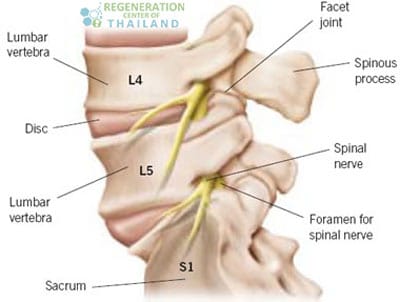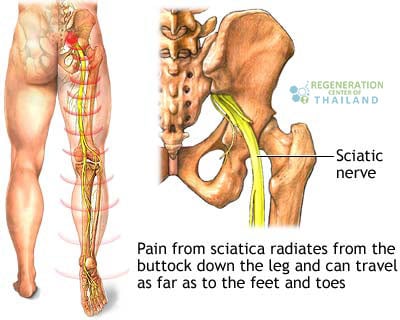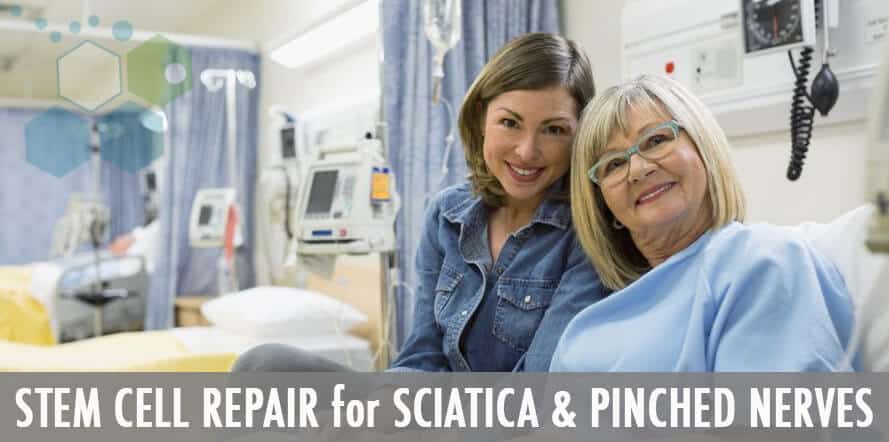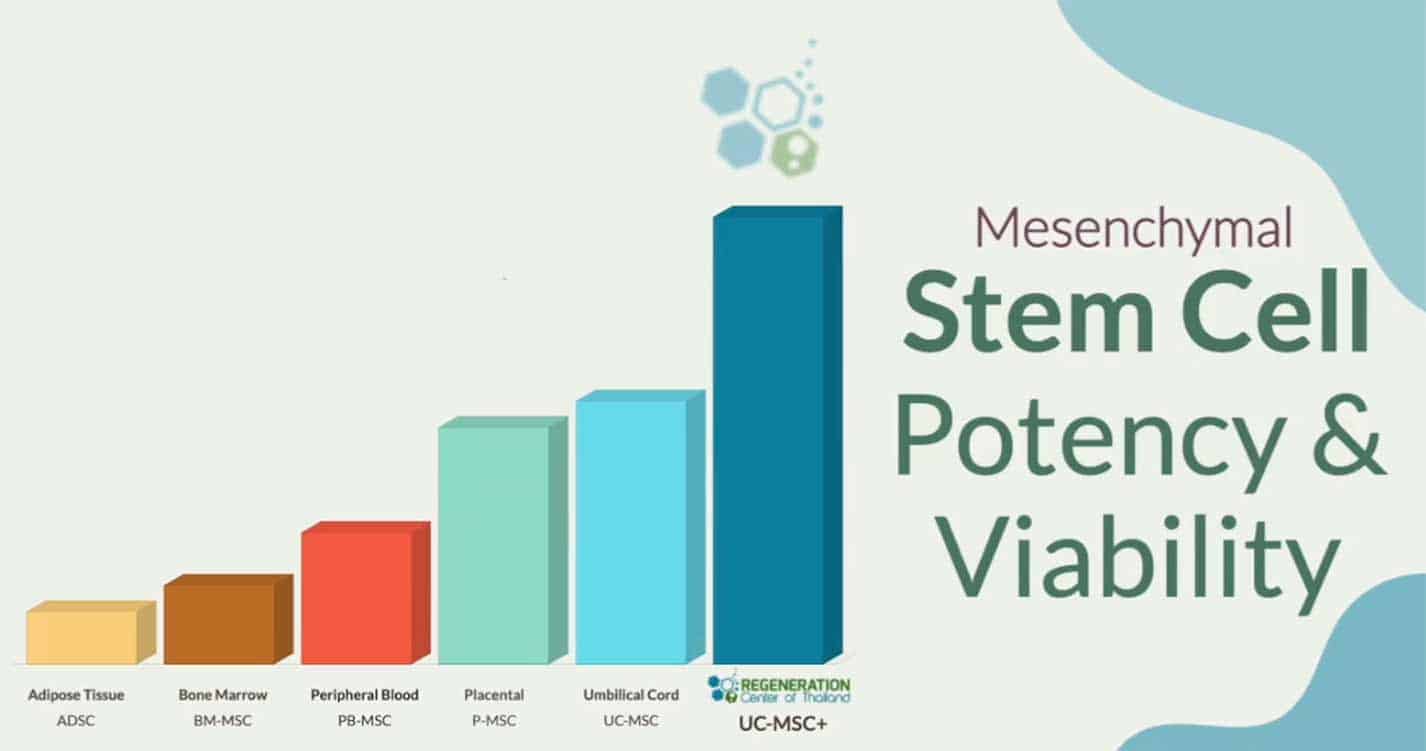Sciatic nerve injury or Lumbar Radiculitis and Sciatica pain usually result from sports injuries or other activity that causes compression of the sciatic nerve. The pain can be severe for some and runs all the way from your lower spine to the buttocks region and also down the back of your legs to the calf areas. In most cases, the pain and discomfort is temporary and goes away naturally within a few months but for some the injuries are persistent and may require surgery or alternative treatment options such as stem cell therapy.[1]
Stem Cell Therapy for Sciatica Nerve Injury
Sciatic pain is caused by many types of conditions, including:
- Bulging discs
- Chronic back injury
- Degenerative Disc Disease
- Slipped,Herniated or ruptured disks
- Blunt Trauma from falling causing nerve compression
- Ankylosing spondylitis which is related to inflammatory systemic autoimmune diseases like rheumatoid arthritis
- Spinal stenosis & Spinal related injuries
- Complications from Osteoporosis
- Shoulder injury caused by torn rotator cuff
- Constriction of the piriformis muscle
Using Stem Cells for Sciatic Nerve Injury
Sciatic nerve damage is not a permanent condition and can be reversed effectively at The Regeneration center. The effects of peripheral neuropathy, Pinched nerves & sciatica can be damaging if left untreated. Conditions that can lead to this injury are mostly related to the spine which is primarily responsible for your movement and function. Others first show symptoms after a serious shoulder injury or damage to the hip joints and knees. Imagine having to live a life with sciatic nerve injury and predisposing yourself to several distressing symptoms such as severe pain and muscle weakness, loss of mobility and sensation, and even loss of bowel or bladder control. In effect, your general quality of living would be greatly affected if sciatica is not properly addressed and treated effectively using MSC+ stem cells.
It is for this reason that treatment should be applied at the very onset of symptoms. Sciatica, or sciatic nerve impingement, can lead to permanent nerve damage due to either severe injuries or a prolonged and untreated case.
Long Term Results of MSC+ Cell Therapy for Nerve Damage
The Role of Adult Stem Cells
Stem cells are basically the human body’s master cells that can assume the role of basically any cell in the human body. Stem cell therapy process requires the use of adult stem cells, which greatly differ from embryonic cells. The use of adult stem cells eradicates the argument that surrounds the issues regarding the research on embryonic stem cells. The adult cells used for the treatment of chronic pain are referred to as the mesenchymal cells. These, in turn, can embrace the cell characteristic and assume the part, be it cartilage, bone, fat “adipose” cells, or nerve cells.

These mesenchymal cells may be harvested from the patient’s fat deposits or adipose tissue around the abdomen, or his/her bone marrow (usually from the hip). The harvested cells are then introduced into the site of injury for them to eventually grow and rejuvenate the injured area. If the patient has poor health and is not a candidate for autologous cell therapy we can offer immune compatible cells from cord tissue or placenta derived cells.

Stem cell therapy is still considered the “last line of defense” to counter permanent nerve injury, as well as the resulting pain and disability for patients with lupus. This innovative regenerative medical treatment aims to bring light into the situation of patients with lingering chronic conditions or those who underwent conservative modalities such as physical therapy or spinal decompression but without any favorable result.[2]
TREATMENT PRECAUTION
Stem Cell Therapies Are Not Appropriate For All Cases. Patients with Unidentifiable Tissue damage,Travel Restrictions or Severe Structural Problems Will Not QualifyNon-Surgical Sciatic Nerve Treatment in 2024
If you are interested in relieving Sciatica without the risks of having back Surgery or steroid injections then a combination of expanded MSC+ stem cells may be a good alternative. Our research experience has shown that most people with sciatica prefer not to have surgery or risk the long term side effects experienced with frequent steroid injections. The regeneration center offers an innovative and very effective alternative that actually treats the underlying condition that is causing the pain. Our new MSC+ sciatica protocol uses a optimal mix of isolated MSC+ Cells, neural progenitor cells, nerve and tissue growth factors with laboratory expanded stem cells for powerful results in a multi-stage treatment plan that will require a MINIMUM of 14-16 nights in Bangkok.
The specifics of your SCIATICA protocol will depend entirely on the severity of the underlying condition and other relevant medical factors such as your existing health and age. Contact us to find out if stem cell therapy is right for you or to learn more about foods that help arthritis or how stem cell have helped people suffering from sciatica.[3]
Cost of Treating Sciatic Nerve Injury with MSC+ Cells
The costs for treating sciatic nerve injuries will depend on the extent of the damage to the patients spine or nerves. To qualify for treatment and to receive a complimentary treatment plan with fixed prices for the entire treatment our doctors will need to conduct a virtual consultation using your recent lab results (MRI’s,CT Scans) or medical report from your primary care physician or orthopedic/spinal doctors in your home country. Upon approval, a detailed treatment plan will be provided that will includes the specifics such as exact total number nights required along with the total medical related costs. To begin the qualification process for our multi-stage relief treatment for pinched nerves & Sciatica please prepare your recent medical records contact us today.
Published Clinical Citations
[1] ^ Elfar JC, Jacobson JA, Puzas JE, Erythropoietin accelerates functional recovery after peripheral nerve injury. J Bone Joint Surg Am 2008;90:1644-53
[2] ^ The mesenchymal stem cell-derived microvesicles enhance sciatic nerve regeneration: a novel approach in peripheral nerve cell therapy.Raisi A, Azizi S, Delirezh N, Heshmatian B, Farshid AA, Amini K. J Trauma Acute Care Surg. 2014 Apr;76(4):991-7. doi: 10.1097/TA.0000000000000186.
[3] ^ Role of Central Plasticity in the Outcome of Peripheral Nerve Regeneration. Mohanty CB, Bhat D, Devi BI. Neurosurgery. 2015 Sep;77(3):418-23. doi: 10.1227/NEU.0000000000000851.


